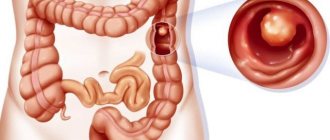Ultrasound of the penis is an accessible and informative method for diagnosing the male genitourinary system. Its use is effective for identifying pathological abnormalities in organ structures, changes in spongy, cavernous bodies and a number of other problems. Ultrasound of the genital organ often has no alternative. It is safe and can be performed at any age and repeatedly. However, it is rarely used as an independent study; as a rule, it is carried out in combination with Doppler measurements.
TREATMENT AT THE DIANA CLINIC IN ST. PETERSBURG 8-800-707-15-60
COST OF AN APPOINTMENT WITH A GYNECOLOGIST 1000 rubles.
What parameters are being studied?
The content of the article
Ultrasound of the penis evaluates a number of indicators:
- the speed of blood movement through the arteries and veins, characterizing the state of the organ’s vessels;
- diameter and thickness of arterial walls;
- echogenicity of cavernous tissues. Based on these results, it is possible to recognize symptoms of circulatory disorders, fibrosis, inflammation, and the presence of pathological foci;
- thickness and elasticity of the membrane (tunica albuginea) of the penis;
- parameters of venous blood flow. The presence of venous outflow at the time of absolute erection is a sign of erectile dysfunction.
What do they look for on an ultrasound of the penis?
Ultrasound provides a valuable opportunity to assess the underlying changes occurring in the structure of the penis, as well as to see the condition of all parts of the penis (spongy and cavernous bodies, tunica albuginea, arteries and veins).
If you examine the male genital organ using ultrasound, you can:
- identify neoplasms of the urethra and penis or ensure their absence;
- identify vascular thrombi;
- not only assess the condition of the organ, but also see the beginning changes in it;
- if formations are present, examine their structure and determine the quality of the process.
Ultrasound scanning of blood vessels is a diagnostic method that is highly informative. It is a combination of ultrasound diagnostics and the Doppler method. It is he who allows the urologist to find out:
- about the level of vascular tone;
- about the condition of the vascular walls, their elasticity or structural changes;
- about the characteristics of arterial inflow and venous outflow of blood from the organ;
- about the speed of blood flow.
Thus, Doppler ultrasound plays an important role in determining disruptions in blood flow. And if the blood flow through the vessels supplying blood to the penis is reduced, or the outflow of blood is impaired, then problems with the functions of the organ cannot be avoided.
What abnormalities are detected by ultrasound with and without Doppler?
Examination of the penis using ultrasound with a conventional sensor allows you to detect:
- neoplasms of the urethra and penis;
- vascular thrombi;
- pathological changes in the penis;
- the presence of scars and foreign bodies in the urethra;
- calcification of erectile tissue;
- condition of the cavernous and spongy bodies;
- the structure of formations (if any) and the degree of neglect of the process.
Ultrasound of the penis with the Doppler effect allows you to determine:
- disturbances in blood flow rate;
- reasons for early ejaculation;
- vascular tone;
- the condition of the vascular walls, their elasticity and structural changes;
- features of arterial inflow and venous outflow of blood from the organ.
Preparation and performance of ultrasound of the vessels of the penis
The procedure does not require special preparation; it is enough to wash the genitals before the examination. To get the most accurate result, you should not take medications that affect the functioning of blood vessels on the day of diagnosis, as well as smoke, drink alcohol, coffee, tea and energy drinks.
The research is carried out in the following order:
- The patient undresses from the waist down and sits on the couch.
- The penis is lubricated with a water-based gel for better conductivity.
- An ultrasound sensor is applied to the penis and moved around the entire perimeter to study the state of the vessels at rest.
- Using the drug Caverject, a rush of blood and an erection are provoked, then the condition of the blood vessels is examined again. The drug is injected into the penis.
After the procedure, an erection may persist for some time, this is due to the effect of the drug. The patient can relieve tension through masturbation.
The ultrasound procedure takes 30-40 minutes. The results are given to the patient immediately.
Diseases and pathologies of the penis that a urologist can diagnose
Ultrasound of the penis allows you to detect a wide range of pathologies and make an accurate diagnosis for the patient. These include the following violations:
- Vascular thrombosis is an inflammatory thrombosis of the venous wall, characterized by the formation of blood clots that block the lumen of the vessels. The disease significantly increases the risk of death in men suffering from cardiovascular disease;
- Malignant and benign formations. Provided timely diagnosis and treatment, the prognosis for a benign tumor is favorable. Elimination of a malignant tumor without serious consequences is possible only in 60% of cases, even if it is detected at the initial stage.
- Fibrosis of the corpora cavernosa is a partial or complete replacement of the cavernous bodies of the penis with scar tissue, accompanied by various deformations of the organ (curvature, shortening, narrowing). This pathology disrupts the erectile function of men;
- Atherosclerotic lesions are a dangerous disease characterized by narrowing or complete blockage of the vessels of the penis. May cause decreased libido, chronic impotence, urinary problems and prostate adenoma;
- Stenosis of the penile arteries is a serious pathology in which the lumen of the vessel is closed by more than 70%. Drug treatment in this case is ineffective; blood flow can only be improved through surgical intervention;
- Peyronie's disease is a pathology characterized by curvature of the penis due to fibroplastic degeneration of its tunica albuginea. The disease is quite rare - in 0.5-1% of men aged 35-60 years;
- Traumatic consequences (cavernitis, abscess, shortening and deformation of the penis, erectile dysfunction, urethral stricture);
- Congenital anomalies of the organ.
Once again about ultrasound examinations of the genitourinary system in men.
Ultrasound diagnosis of diseases of the reproductive and urinary systems is very popular due to its informativeness, safety and reasonable cost. For many diseases of the urinary tract, ultrasound of the kidneys and, in some cases, ultrasound of the bladder are prescribed. You will learn a detailed list of indications by reading this article.
If you are male, this section contains useful information about ultrasound and TRUS of the prostate gland (diagnosis through the rectum), scrotal organs, including testicles, and examination of the penis. After reading the information provided, you will learn what standards a healthy man should have and other important information.
Ultrasound of the genital organs is simple, accessible and effective. The method is so popular among specialists in both therapeutic and surgical fields that not a single diagnostic process in men with complaints of sexual dysfunction can be done without it.
Are there any risks from performing an ultrasound?
The ultrasound waves used for the procedure are not radiation, so there is no harm from this study. Ultrasound of the scrotum is a necessary measure for the timely diagnosis of diseases at a very early stage of their development. That is why this procedure must be resorted to if any abnormalities in men’s health appear.
Ultrasound of the penis.
The examination allows you to evaluate changes in the structure of the cavernous and spongy bodies, as well as the membranes of the organ and the vessels that feed it. Ultrasound of the penis is necessary in the following cases:
- trauma, genital fracture
- decreased erectile function
- with curvature of the organ caused by Peyronie's disease (proliferation of fibrous plaque) or congenital malformation
- for formations that appear on the organ
- if you are planning plastic surgery on the penis.
Dopplerography of the penis (USDG) is performed on an ultrasound scanner, which has additional capabilities for color mapping. This study is based on the properties of an ultrasonic wave to form an image of a vessel, reflecting from blood cells moving through it. When mapping, the speed of blood flow through different vessels is indicated in different colors. This often occurs immediately after a routine ultrasound examination using the same machine.
Ultrasound scanning of the penis helps determine the following parameters:
- the rate of blood flow through the arteries supplying blood to the sexual organ, the characteristics of these arterial vessels
- speed and characteristics of outflow through veins.
Preparation for the procedure
There is no need to prepare for this type of ultrasound diagnostics. No diet, no filling of the bladder, or any other manipulations are needed.
How is ultrasound diagnostics of the penis performed?
The procedure is performed with the patient in a horizontal position. A hypoallergenic gel is applied to the genital organ, which will help ensure better contact of the sensor with the skin. The sensor is moved over the skin to visualize the entire structure and also record Doppler spectra of the deep arteries of the penis. The ultrasound result is released immediately after the procedure.
Thus, ultrasound of the penis is an important method in diagnosing pathologies of the male genital area. The procedure does not require preparation. This test is safe and painless, and it is difficult to find an alternative.
Ultrasound of the prostate.
All men should be familiar with the answer to the question of how a prostate ultrasound is performed, since the study is quite simple and can be carried out both as a routine annual examination and when symptoms of “problems” with the gland occur.
These include:
- painful urination
- pain in a man's lower abdomen
- difficulty urinating
- nightly trips to the toilet
- difficulty conceiving a child
- abnormal urine or semen analysis
- some other sexual function or urination disorders.
How is a prostate ultrasound done?
This procedure can be performed in two ways: through the abdomen (transabdominal, TaUS) or through the anus (transrectal, or TRUS).
The first examination is considered uninformative. It only helps to diagnose bulky pathology of the gland, but is a solution in situations where its transrectal analogue cannot be performed.
An abdominal ultrasound of the prostate is performed after the man has first filled his bladder. To do this, he needs to drink 3-4 glasses of still water an hour before the test and not urinate.
How is an ultrasound of the prostate gland done using this method?
- The patient on the couch is positioned on his back.
- The sensor is placed on the front wall of the abdomen, previously lubricated with a special hypoallergenic gel, which will create a transitional environment between the skin and the sensor (this will ensure a lower probability of errors).
- The doctor, operating an ultrasound transducer, scans the gland in the longitudinal and transverse planes.
How is a transrectal ultrasound of the prostate performed?
Before this, you not only need to fill the bladder, but also do an enema several hours before the test (you can get by with a Microlax-type microenema or a glycerin suppository).
- The examination of the prostate gland is carried out with the patient positioned on the left side.
- An ultrasound probe, which is the size of a man's finger (less than 2 cm in diameter), is inserted into the rectum to a depth of several centimeters.
- In this case, the man lies on his left side, bending his knees and bringing them to his stomach (this results in the “fetal position”).
- A disposable condom will be placed over the sensor, so if a man is allergic to latex, he needs to inform the doctor in advance.
How to get a bladder exam
If an ultrasound of the bladder and prostate gland is performed (it is performed transabdominally), then the bladder will also need to be filled. Only for this, it is best to simply come to the procedure in advance (half an hour in advance), with a container of still water or tea. You need to start the procedure when you feel the first urge to urinate.
Ultrasound of the bladder and prostate is performed in the supine position and begins with the examination of cross sections of organs from the pubis to the navel. The patient feels this as a change in the position of the sensor. Then a scan is performed in the longitudinal direction, and for better visualization, the patient sometimes needs to turn on his side. After the examination is carried out with a full bladder, the patient is asked to go to the toilet, after which his bladder is examined again: how it has changed after emptying, what its walls look like in this position.
Examination of the prostate for pathology
- Prostate adenoma on ultrasound is detected as a formation with clear contours and a well-visualized capsule, while shapes and sizes can be different.
Found in almost half of men aged 50; Over the years, the incidence of the disease has been increasing. This is a benign increase in the mass of the gland due to its glandular, jointly glandular and muscle or muscle-connective tissue components.
Adenoma is detected by ultrasound in two forms:
- nodular (almost 80% of all cases of the disease)
- diffuse.
In the case of a nodular form in the initial stage of the disease, the ultrasound doctor describes formations surrounded by a hypoechoic zone (the minimum size of the nodule that the device can “see” is 7 mm). If the stage is advanced, then the study protocol may contain the words “prostate asymmetry”, “heterogeneity of structure”. The fact is assessed whether the urethra has been compressed by an adenoma or not: this can only be done based on the results of TRUS.
2. Prostatitis on ultrasound can look completely different, depending on the degree, stage and nature of the inflammation.
But this disease will not go unnoticed, especially when performing TRUS.
• Acute prostatitis will look like an increase in the size of the gland, while its echo density decreases.
• In chronic prostatitis, areas of sclerosis are visible, which are described as hyperechoic foci without an acoustic effect. “Calcifications” or stones in the gland will also be a sign that there is a sluggish inflammatory process in the organ.
• The abscess is visualized as a round or irregularly shaped lesion, the echogenicity of which is reduced. With Doppler ultrasound, such a lesion has no blood supply; a bright and extensive network of vessels is visualized around it.
3. Diagnosis of prostate cancer is also carried out by ultrasound.
Only if this process is suspected, under the control of transrectal ultrasound examination, a biopsy of the area suspicious for a malignant tumor is performed, and this is the final diagnosis. Thus, you have learned how a prostate ultrasound is performed and what pathologies of the genitourinary system it helps to identify. The information content of this type of diagnosis is higher than the discomfort during the procedure, which is important for people who value their health.
Ultrasound of the scrotum.
A scrotal ultrasound is a procedure that examines the scrotum using high-frequency ultrasound waves to see its internal structure. This method refers to the primary diagnostic measure that helps identify the presence of pathologies in men’s health. There is no need to talk about the importance of early detection of diseases, since our health and life expectancy directly depend on it.
Indications for ultrasound examination of the scrotal organs are prescribed in the following cases:
- male infertility
- an increase in the size of the epididymis and testicle
- erectile dysfunction (inability to achieve an erection)
- pain in the scrotum and swelling
- suspicion of inflammatory diseases of the testicles and scrotum (orchitis, epididymitis, orchiepididmitis)
- organ injury (hemorrhage, hematoma, tissue damage)
- the appearance of tumor-like formations in the testicle and outside it
- a decrease in one or both testicles in size, which is accompanied by sagging of the scrotum on one or both sides, respectively
- puberty ahead of schedule, or, conversely, the presence of signs of its slowdown
- change in spermogram readings
- swollen lymph nodes, which may indicate the presence of a malignant tumor in the testicles
- suspicion of varicicol
- surveillance of previously detected tumors, infections and leukemias
- Cryptorchidism is an abnormality of the testicles, characterized by their absence (one or both at once) or non-standard position in the groin area
- endocrine diseases
- suspicion of an inguinal hernia with partial entry into the scrotum
- monitoring the condition of the organ after operations performed on it.
If it is necessary to assess the condition of the scrotum and the parameters of blood flow in it, a scrotal vessel ultrasound is performed. The procedure allows us to identify the true factors that caused many diseases (for example, varicocele). It is also possible to accurately determine the presence of testicular torsion. With a conventional ultrasound, this pathology is not detected accurately. Dopplerography of the scrotum is a completely accessible and informative study.
Do you need any preparation for this procedure?
No special preparation is required for an ultrasound scan of the scrotum. The only condition for performing this study is hygienic treatment of the genital organ. Sequence of the study
How to do an ultrasound of the scrotum:
- the patient lies on the couch, on his back or on his side
- A special gel is applied to the scrotum area, which helps to establish safe contact between the patient’s skin and the ultrasound machine.
- The scrotum is examined using an electromagnetic sensor.
Ultrasound of the kidneys and bladder.
Ultrasound of the kidneys and bladder is a type of non-invasive diagnostic study of these organs. It allows you to visualize their structure, determine whether there are obstacles to the outflow of urine, what could be the possible cause of this condition. This ultrasound examination also allows you to indirectly judge the function of the entire urinary system.
Who needs this diagnosis:
The bladder and kidneys need to be examined in the following cases:
- a general urine test reveals a large amount of salts or red blood cells, protein in the urine is determined
- upon examination, a formation is felt in the lumbar region
- blood in urine is visible to the naked eye
- lower back pain that radiates to the thigh, suprapubic region
- decrease or increase in the amount of urine
- fever without signs of acute respiratory viral infection
- frequent urination
- often recurrent cystitis.
What diseases will the study reveal?
Ultrasound diagnostic examination of the bladder and kidneys reveals the following diseases:
- abscesses in the renal parenchyma
- pyelonephritis
- stones anywhere in the urinary system
- tumors of these organs
- nephroptosis
- diverticula
- cysts of these organs
- organ injuries
- cystitis.
How to do kidney ultrasound for children and adults
Ultrasound examination of the kidneys is a simple method for the patient; This procedure does not require the insertion of needles, catheters or other instruments anywhere. There are no painful or unpleasant sensations during the examination.
An ultrasound of the kidneys is performed as follows:
the patient arrives on an empty stomach, with a full bladder. He needs to undress to the waist or lift his clothes so that the sensor has access to the abdomen, lateral areas and lower back. An ultrasound of the kidneys is done lying down. A special gel is applied to the patient’s skin, the function of which is to ensure better contact of the sensor with the skin. This is what can cause a feeling of slight discomfort in the first moments of the study, since the gel is cool and moist. Next, the ultrasonic sensor emits waves, which, reflected from the kidneys and nearby organs, form their image on the monitor.
The doctor takes measurements of the kidneys and structures of the urinary tract, immediately records his conclusions based on the results of the study and gives the patient a printout. Diagnosis of the urinary system
What does a doctor who does an ultrasound of the kidneys and urinary system see?
Scanning is carried out polypositionally. It starts from the lumbar region, which makes it possible to visualize the kidneys in the longitudinal direction. Next, the transducer is moved to the anterior and lateral surfaces of the abdominal wall, resulting in oblique and transverse sections of various parts of the kidney. This helps to determine their topography, size, thickness and condition of the parenchyma, renal sinuses, cups and pelvis. Not only the homogeneity and quality of visualization of the kidney structures is assessed, but also its mobility during breathing.
If an ultrasound of the kidneys and bladder is performed, the patient may be asked to empty the bladder after the first examination, and then again, with an empty bladder, to assess the residual volume of urine in it, and also to re-examine the entire urinary system.
How to do an ultrasound of the kidneys if one or two kidneys are suspected of prolapse (nephroptosis).
In this case, in addition to the standard examination while lying down, with examination of the kidneys at the height of inspiration, the patient is asked to stand up, after which a second examination is performed and measurements are taken.
What is needed for an ultrasound of the kidneys.
This test requires that the patient arrive at the appointed time with a full bladder. To do this, he needs to drink about a liter of water an hour before the procedure, then do not urinate. To get an even better look at the kidneys, a person is asked to perform this action several times - inhale and hold their breath. And for a better assessment of the bladder, it is re-examined - after the patient goes to the toilet.
It should also be noted that an examination of only the bladder can be carried out transvaginally: then a special ultrasound sensor is inserted into the vagina (after you have gone to the toilet in a small way). Such a diagnosis can be carried out either immediately or after these structures have been examined abdominally. The bladder must be inspected after it has been emptied. A large amount of urine remaining in it in combination with a thickened wall indicates an inflammatory process (cystitis).
Thus, ultrasound of the kidneys and bladder is a diagnostic that allows you to evaluate the structure and indirectly the function of the urinary system. It is carried out after certain preparation, is painless and does not even cause discomfort. The result is issued immediately after the procedure is completed.
Dear patients!
You can make an appointment with a urologist by calling our clinic or during a personal visit to the clinic. Contact us at any time convenient for you, we will be happy to help you! Articles on the topic All about colposcopy. Diagnostics,... What is the thyroid gland?...
A little about women's rules of feminine hygiene Breast care before and during... Eat right during... How to increase immunity? Interview…
Indications
Ultrasound of the penis is a key examination in finding the causes of erectile dysfunction. In addition to impotence, indications for the procedure are:
- injuries of various types;
- penis fracture;
- local swelling;
- curvature of the genital organ, which may indicate Peyronie's disease;
- presence of neoplasms;
- decreased erectile function;
- preparation for surgery or plastic surgery in this area;
- swelling or pain when urinating;
- pain or discomfort during sexual intercourse;
- presence of scars and hematomas;
- suspicion of a foreign body or urethral diverticula;
- stricture (narrowing) of the urethra;
- suspicion of atherosclerosis of the vessels of the penis, accompanied by a weakening of potency;
- suspicion of the development of cavernous fibrosis;
- varicocele - one of the most unpleasant and dangerous diseases for a man - dilation of the veins located in the testicles;
- monitoring the patient's condition in the postoperative period;
- assessment of treatment effectiveness.
Ultrasound of the penis is also prescribed to patients who refuse to undergo diagnostics of erectile dysfunction using an invasive method.
Psychogenic potency disorders
In this case, an erection is fundamentally possible. This type of dysfunction
characterized by the sudden onset of the disease. When talking with a patient, you can identify the impact of a stress factor, detect problems in relationships with the opposite sex, overwork, disturbances in sleep and wakefulness, and alcohol intake play an important role.
However, spontaneous erections occur at night, and the problems are temporary. After eliminating the external cause, the erection is restored
.
Preparation
Ultrasound of the penis does not require special preparation. However, certain recommendations should be followed so that the doctor can assess the condition of the organ as accurately as possible and make the correct diagnosis.
Necessary:
- 1-2 days before the examination, stop taking medications for the treatment of erectile dysfunction;
- Carry out thorough hygienic treatment of the intimate area and the penis itself;
- On the day of the study, refrain from masturbation and sexual intercourse;
- In 1-2 days, completely eliminate the consumption of alcoholic beverages.
It is also not advisable to urinate before the examination. If the situation is urgent, it is allowed to visit the toilet 30 minutes before the start of the procedure.
Characteristics of the procedure for studying the structures of the penis
Ultrasound of the structures of the penis at rest is an informative and completely painless diagnostic method, thanks to which any pathologies that arise under the influence of unfavorable factors are determined.
The principle of instrumental research is that a high-frequency sound wave emitted by the device propagates unevenly in a dense medium. Tissues with a higher density reflect ultrasound, which is captured by sensors, converted and visualized information on the display. The internal structures of the penis have different densities and permeability. Therefore, a diagnostician can assess their main characteristics with high accuracy and detect atypical changes.
Diagnostic doctors at the Clinic for Men's and Women's Health conduct research using high-precision new equipment with precise recording of parameters that are entered into the research protocol. Based on this, the attending physician can reliably make a diagnosis.
How is the procedure performed?
For a successful ultrasound of the penis, two mandatory factors must be present:
- A diagnostic urologist is a highly qualified specialist who is proficient in ultrasound techniques;
- Availability of modern high-quality equipment.
The duration of the procedure is about 30-60 minutes. The patient is in a supine position. At the doctor's discretion, the man's legs can be straightened or bent at the knees. The penis is placed on the stomach or on a towel folded between the thighs.
Initially, an overview scan is performed in a resting state of the organ: the doctor applies a special gel to the penis to improve contact with the sensor, then runs the sensor over the skin to assess the anatomical structures and initial blood flow.
To determine the deformation of the penis, blood flow and assess the blood supply to the corpora cavernosa, a pharmacological test is performed - the introduction of a vasoactive drug into the penis to create an induced erection. To do this, it is necessary to apply a special elastic tourniquet to the base of the genital organ.
An injection with a special drug (caverject, vasaprostan, etc.) is carried out with a thin needle directly into one of the cavernous bodies under ultrasound control. It is virtually painless and lasts only a few seconds. As a rule, the drug prostaglandin E1 is used, which significantly reduces the threat of priapism - a prolonged painful erection caused artificially (not due to sexual arousal) and does not stop after sexual intercourse.
To fully assess vascular blood flow, color duplex mapping is used. Arteries are assessed in the phase of turgescence (or swelling) and rigidity (erection), veins - in the phase of detumescence (decay of erection).
Who needs an ultrasound of the penis?
A man enters the office and the doctor invites him to lie down on the couch. Examination of the genital organs in men requires their exposure. The specialist will apply a hypoallergenic gel to it and begin an ultrasound of the genital organs. The gel helps the device come into tight contact with the skin so that no air gets in. An ultrasound of the female genital organs is done in the same way.
The sensor is moved over a man's skin to:
- Completely visualize the structure of the genital organs. Doppler spectra of deep arteries are recorded. If necessary, doctors make an erection using pharmacological agents and analyze how the blood flow moves in the cavernous bodies and its inflow in the arteries;
- A tourniquet will be placed on the penis;
- They will introduce Vazoprostan with Caverject;
- It will enter another corpus cavernosum and an erection will occur. An ultrasound of the penis will be performed again, supplemented with Doppler mapping. Thanks to self-stimulation, the pharmacological effect is removed.
In order for the patient to perform the last manipulation independently, the doctor will tactfully leave the office. A man may subjectively feel some discomfort due to an injection into the penis. It also happens that the erection is partial. Then the patient independently makes it complete and is ready for examination.
After all procedures, urologists tell men that an erection should not be allowed to last more than 4 hours. Erectile functions may be lost.
Features of the procedure
A common problem in men during the procedure is the psychological factor. Injecting the drug into the penis can provoke a fear of pain in a man, as a result of which stress mechanisms are activated and the tone of the nervous system increases. A psychological barrier arises. All this can lead to the development of spasm in the cavernous arteries, due to which the erection will be incomplete or completely absent.
The “lifeline” in such situations is alternative methods of stimulating an erection (taking Levitra or Viagra). Manual (hands) and audiovisual (erotic videos, photos) stimulation can also be used to improve the quality of erection.
The peculiarity of the procedure is the fact of the long-term effect of the drug, which is why the penis can remain in an erect state for a long time. To eliminate this “nuance,” a man is allowed to resort to masturbation. If after this the erection persists for more than 4 hours (priapism), it is necessary to urgently consult a urologist for consultation. In this situation, patients with diabetes are at particularly high risk. Therefore, the patient should warn the doctor in advance if he suffers from this disease.
It is also worth noting that after a pharmacological erection, a second erection should not be allowed earlier than after 4 hours. This is extremely dangerous for erectile function and can lead to its complete loss.
Cost of Caverdext - test
| Name of service | Price, rub.) |
| Primary appointment with a general practitioner | 1800 rub. |
| Repeated appointment with a general practitioner | 1300 rub. |
| Primary appointment with a urologist-andrologist | 1800 rub. |
| Repeated appointment with a urologist-andrologist | 1300 rub. |
| Caverject - test | 6000 rub. |
All our services and prices
Decoding the results
The ultrasound results are entered by the doctor into a special protocol:
- Echogenicity. If no deviations were found, then o. is indicated in the transcript. Hyperechogenicity indicates cavernous fibrosis, hypoechogenicity indicates inflammation of the cavernous bodies (acute cavernitis).
- Changes in the cavernous bodies. A homogeneous structure is considered the norm. The heterogeneous structure of tissues is a sign of cavernous fibrosis.
- Pathology of the tunica albuginea of the penis. At rest, the thickness of the membrane should be about 2 mm, during erection - 0.5 mm. Exceeding this value may indicate Peyronie's disease. The tunica albuginea should have “normal” echogenicity. Detection of hyperechogenicity is a reason to prescribe additional examinations for vascular damage.
- The normal diameter of the arteries is from 0.2 to 1.4 mm. Exceeding the indicator (more than 1.4 mm) indicates abnormal development of the vessels of the penis. A diameter of less than 0.2 mm indicates the presence of pathologies associated with diabetes, atherosclerosis or other autoimmune diseases.
Indicators of the normal intensity of blood movement during systole:
| At rest of the organ | 15-25 cm/sec |
| During erection | From 35 cm/sec |
Non-compliance with the standards indicates arterial insufficiency. During systole, significant arterial resistance should be observed.
Blood flow intensity during diastole:
| At rest | 0 cm/sec |
| During erection | From 10 cm/sec |
The normal pulsation index is over 4.
Normal resistance index values:
| At rest | 0,8 |
| When excitement appears | 0,7 |
| During erection | 1,0 |
Blood mobility is determined in the deep dorsal vein. When an erection occurs, there should be no blood flow in it. Otherwise, the possible diagnosis for a man is disappointing - erectile dysfunction.
Cost of examination
An informative examination of the structure of the penis is a relatively inexpensive procedure. The price of an ultrasound examination of the penis structure at the “Men’s and Women’s Health Clinic” is one of the lowest among metropolitan medical centers. Andrologists, together with the institution’s diagnosticians, will promptly take measures to establish the causes of illnesses and prescribe an acceptable treatment regimen. In addition to ultrasound, a team of experienced doctors perform a range of treatment procedures, the cost of which can be seen in Table 1.
When an ultrasound examination is not enough, a clinic specialist will suggest diagnostics with Doppler ultrasound or duplex scanning. This approach will remove doubts about the correctness of the diagnosis. The results of the procedure are deciphered immediately and given to the patient.
Table 1. Medical procedures related to the restoration of erectile function and their cost at the “Men’s and Women’s Health Clinic”
| Service | Price |
| Initial appointment with an andrologist (examination, consultation) | 2000 rubles |
| Repeated appointment with the andrologist | 1000 rubles |
| Ultrasound of the penile structures at rest | 1300 rubles |
| Duplex scanning pharmacodoppler of penile vessels | 2300 rubles |
| Extracorporeal shock wave therapy for erectile dysfunction (1 session) | 2500 rubles |
You can make an appointment with a doctor by calling the number listed on the website. The consultant will call you back within five minutes. We will help you choose a time that is convenient for you to visit the clinic.
Can there be side effects after the examination?
The procedure is generally safe and painless. However, the patient may experience mild pain during the administration of the drug for induced erection and discomfort if he has been found to have organ damage or an infection in the acute stage.
Also, a small hematoma may occur at the injection site, and sometimes mild dizziness may occur. These symptoms go away quickly. But to avoid such complications, some clinics are more inclined to use alternative methods of stimulating an erection.
Why do we have
- To have an ultrasound done, you can come to us at any time convenient for you: we will see you daily from 9:00 to 21:00 without breaks or weekends.
- We offer an innovative consultation approach to each patient: ultrasound is performed by doctors of the highest category with simultaneous consultation with a gastroenterologist; if necessary, consultation with related specialists is prescribed. All types of related studies are available to patients of the Center; test results are issued in printed form and stored in a database with the possibility of further operational use.
- The results (ultrasound, examination, ECG, Holter-ECG, ABPM, bicycle ergometry, tests) are printed and given immediately to the patient in a convenient folder. In addition, they are stored electronically in the database (electronic medical record of the patient) of the Broad Hearts MC and allow the doctor to assess the dynamics of treatment and observation. Also on our website there is a service: Personal account, where all results are stored electronically and can be opened by patients anywhere and at any time independently. The personal account login is a phone number, and the password is sent via SMS to the specified phone number after payment for services. If problems arise, you can contact the center administrators by phone.
- We provide diagnostic services in Voronezh to the youngest patients (from the first month of life) and adults without age restrictions. Find out more about ultrasound capabilities from the administrator of the “Broad Hearts” MC by phone: (473) 280-20-30.










